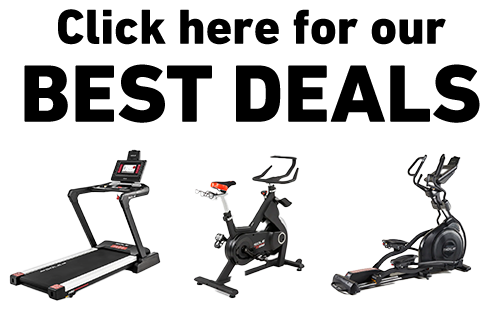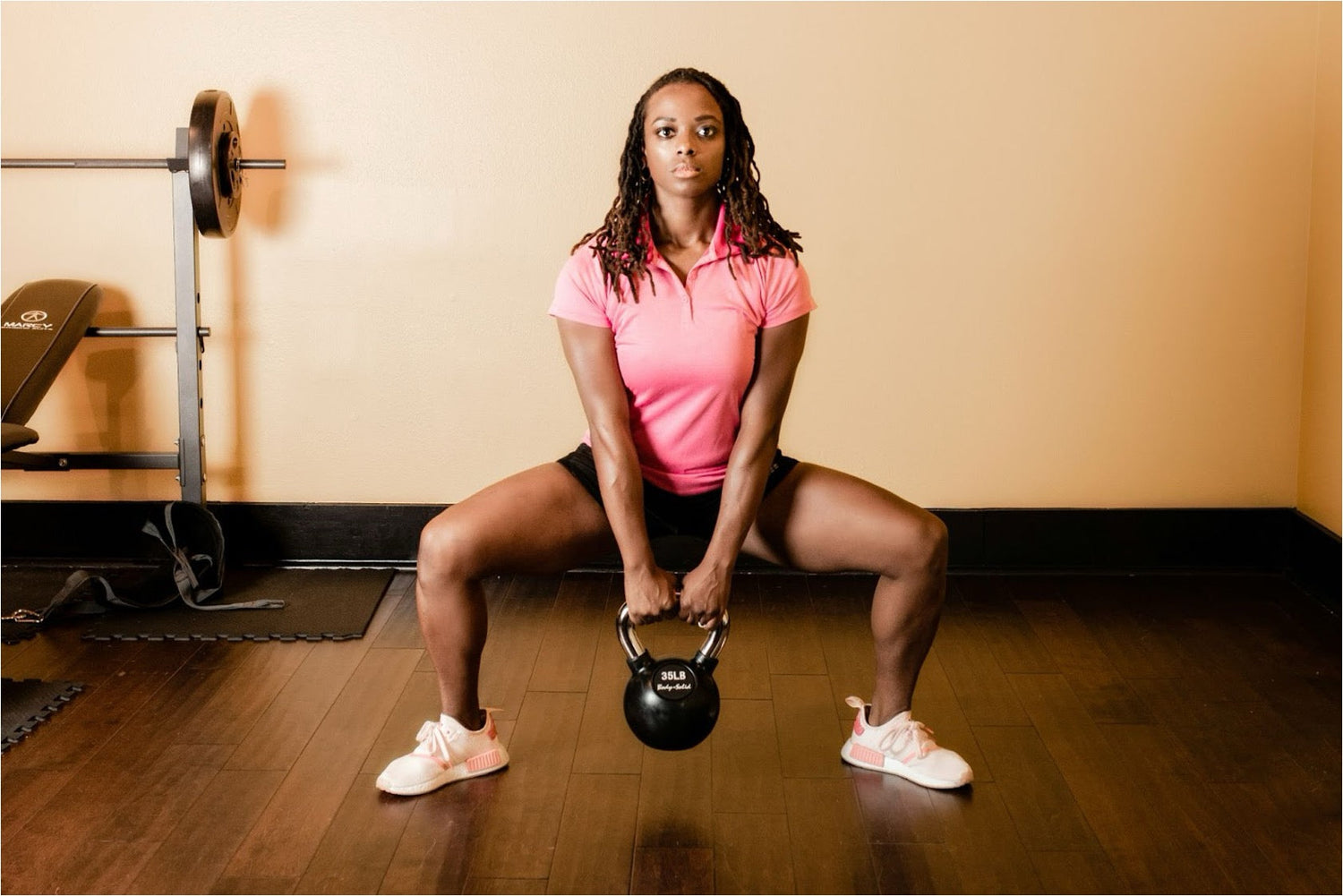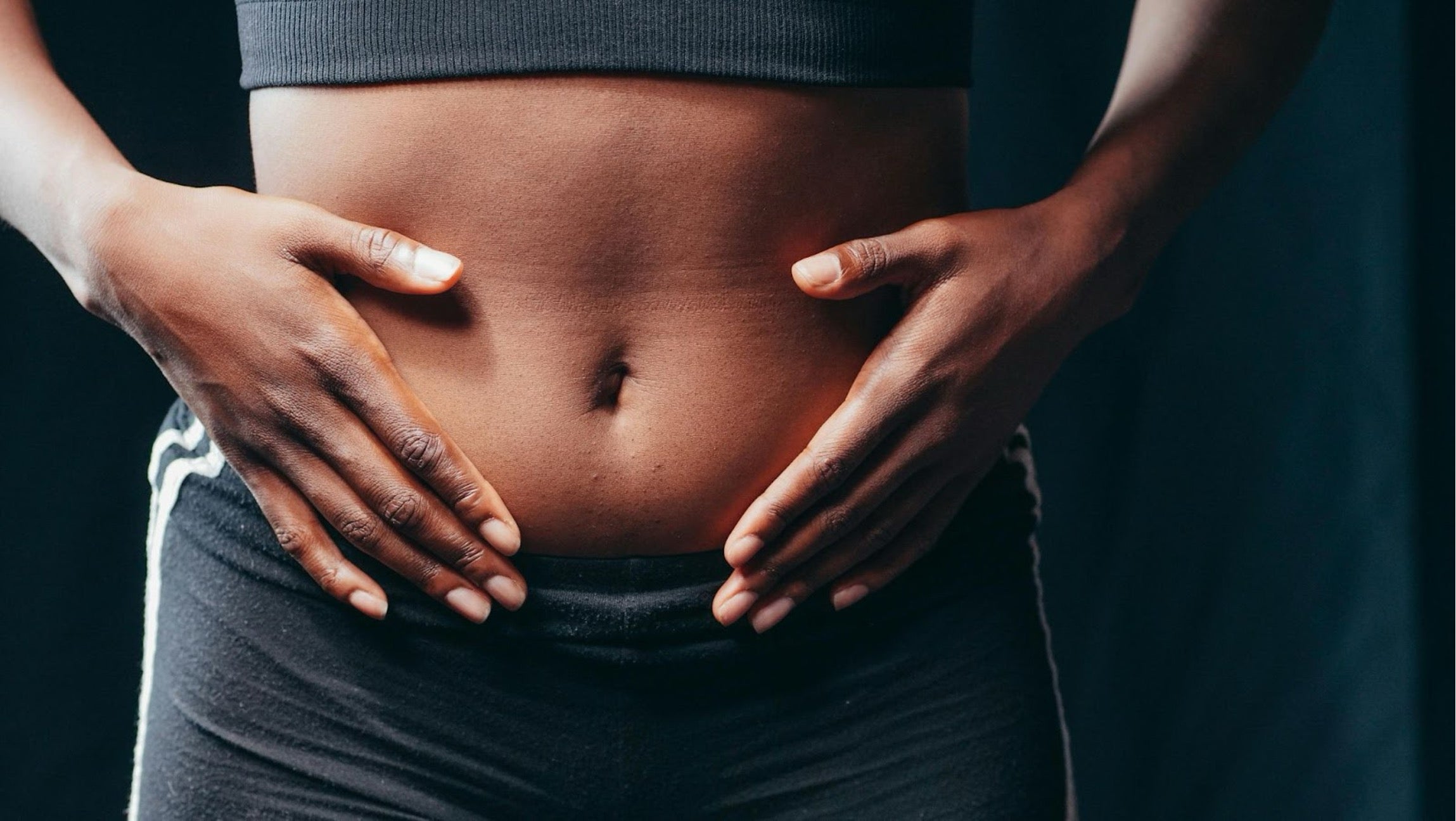Key Takeaways
- Squats primarily target the quadriceps, hamstrings, and glutes, which are crucial for lower body strength.
- Secondary muscles engaged during squats include the calves, core, and adductors - important for overall stability and balance.
- Different squat variations, such as goblet, barbell, and jump squats, target muscles in slightly different ways, offering varied benefits.
- Proper squat form means keeping your back straight and knees aligned with your toes.
- SOLE’s SRVO All-in-One Trainer and SW101 Dumbbells improve squat workouts by providing resistance, stability, and versatility to effectively target lower body muscles.
Squats and Their Target Muscles
Squats target a range of muscles primarily within the lower body - and different types of squats will have varying degrees of impact on these muscles.
Additionally, incorporating equipment or weights into your workout will also determine the level of strain put on these muscles.
|
At SOLE, we're proud to offer the best exercise equipment for your home or gym. Our machines are built to meet the highest quality and performance standards, making them perfect for fitness enthusiasts at any level. Featured Products SOLE Strength: Starting at $99.99, SOLE strength products such as adjustable dumbbells and stands, free weights, Olympic barbells, etc. are designed to promote functional strength and progressive muscle growth. |
Primary Muscles Engaged
Quadriceps Activation
Your quadriceps, or quads, are the large muscles located at the front of your thighs.
They are heavily activated during squats as they help extend your knees when you rise from the squat position.
Hamstring Engagement
While the quadriceps are busy doing their part, your hamstrings, located at the back of your thighs, are also hard at work. They play an important role in bending your knees and stabilizing your movement. By working in tandem with the quads, the hamstrings ensure a smooth and controlled squat.
Their engagement is subtle yet vital, giving you the necessary counterbalance to the powerful push from your quads.
Glute Focus
As we mentioned above, squats are particularly well-known for targeting the glutes, helping you build a strong and shapely posterior. The glutes are responsible for hip extension, which is a key movement in squatting.
As you lower yourself into a squat, your glutes stretch and store energy. Then, as you push back up, they contract powerfully, propelling you to a standing position. This cycle strengthens your glutes and improves your overall athletic performance.
Secondary Muscles Engaged
Calves
Your calves, located at the back of your lower legs, are engaged during squats to provide additional support and stability. They work to keep your heels on the ground and assist in maintaining balance throughout the movement.
Core Stability
The core muscles, including the abdominals and lower back, are important in maintaining proper posture and alignment during squats. A strong core ensures that your torso remains stable, reducing the risk of injury and improving the effectiveness of the exercise.
Adductor Function
The adductors, located on the inner thighs, help stabilize your legs and prevent them from splaying outwards during squats. By engaging the adductors, you can achieve better control and alignment, which is crucial for maintaining proper squat form and preventing injuries.
Maximizing Squat Effectiveness
- Keep your feet shoulder-width apart and your toes slightly pointed out.
- Engage your core to maintain a straight back throughout the movement.
- Lower your body by bending at the hips and knees, keeping your chest up and eyes forward.
- Ensure your knees track over your toes and don't extend past them.
- Push through your heels to return to a standing position.
- If you do barbell squats, stick to 6 sets at a time for best results (there’s science behind that!)
Squat Variations and Impact
Goblet Squat Muscles
When you hold a dumbbell or kettlebell close to your chest while doing a squat, it's a great way to really work your core muscles.
But the goblet squat is more than just a core workout — it also hits the quads and glutes. With the weight in front of you, your focus shifts to the front of your thighs, making the quads work harder. This variation is great for improving balance and coordination.
Squats help develop better movement patterns in the hips, ankles, and knees.
Barbell Squat Muscles
This variation primarily targets the quads, hamstrings, and glutes and also engages the lower back and core for stabilization. With the barbell positioned on your upper back, your body must work harder to maintain balance, thereby activating the stabilizing muscles around your spine.
Jump Squat Muscles
Jump squats add an isotonic element to the traditional squat, incorporating a plyometric component that enhances power and explosiveness. This variation primarily targets the quads, calves, and glutes, with a focus on fast-twitch muscle fibers.
The explosive nature of jump squats also engages your cardiovascular system, making it an excellent choice for boosting endurance and burning calories.
|
Type of Squat |
Description |
Key Benefits |
Target Muscles |
|
Bodyweight Squat |
A basic squat performed using only body weight. |
Great for beginners; improves overall leg strength |
Quadriceps, Glutes, Hamstrings, Core |
|
Goblet Squat |
A squat where a dumbbell or kettlebell is held at chest level. |
Enhances core stability; engages upper body |
Quadriceps, Glutes, Hamstrings, Core, Shoulders |
|
Back Squat |
A squat with a barbell placed across the upper back. |
Builds strength; allows for heavier loads |
Glutes, Hamstrings, Lower Back, Quadriceps |
|
Front Squat |
A squat with a barbell held across the front shoulders. |
Focuses on core strength; improves posture |
Quadriceps, Core, Upper Back |
|
Sumo Squat |
A wide-stance squat that targets the inner thighs. |
Targets inner thighs; improves flexibility |
Inner Thighs (Adductors), Glutes, Quadriceps |
|
Plyometric (Jump) Squat |
A dynamic squat that includes a jump at the top. |
Increases explosive power; enhances cardiovascular fitness |
Quadriceps, Calves, Glutes |
|
Wall Squat |
A squat performed with the back against a wall for support. |
Builds endurance; good for knee stability |
Quadriceps, Glutes |
|
Split Squat |
A stationary lunge position where one leg is behind the other. |
Improves balance; isolates each leg |
Quadriceps, Glutes, Hamstrings |
|
Bulgarian Split Squat |
A split squat with the rear foot raised on a bench. |
Increases lower body strength; enhances balance |
Quadriceps, Hamstrings, Glutes |
|
Overhead Squat |
A squat performed while holding a barbell overhead. |
Tests flexibility and mobility; engages full body |
Quadriceps, Hamstrings, Core, Shoulders |
|
Hack Squat |
A squat performed on a hack squat machine. |
Focuses on lower body strength with less back strain |
Quadriceps, Hamstrings |
Build an Effective Workout Routine With SOLE Equipment
The SOLE SRVO provides adjustable resistance and support for increasingly effective squats.
At SOLE, we provide a wide range of equipment, including dumbbells, rowers, and the SRVO All-in-One Trainer, allowing for diverse exercises to target multiple muscle groups. This variety ensures a well-rounded workout routine.
With adjustable weight options like the SW180 Dumbbells, you can increase resistance as you progress, optimizing your strength and endurance training. This adaptability helps you meet your fitness goals at your own pace.
The SOLE+ app syncs with your equipment, providing tailored workout plans, tracking progress, and offering real-time feedback. It makes it easy to stay motivated and focused on achieving long-term fitness success.
Ready to take your workouts to a whole new level? Equip yourself with SOLE’s SW180 Adjustable Dumbbells and make every workout count!
Frequently Asked Questions
How often should I do squats?
Most people should try to fit in 2-3 squats a few times a week. That's enough to give your muscles a break and help you get stronger and bigger. But you should listen to your body and change how often you do them based on your fitness level and goals.
Are squats bad for your knees?
When performed correctly, squats are not bad for your knees. In fact, they can strengthen the muscles around the knee joint, providing better support and stability. However, be sure to maintain proper form to avoid unnecessary strain on the knees.
How can I use SOLE equipment to improve my squat workout?
You can use SOLE’s SW101 Dumbbells to add resistance for more challenging squats, while the SRVO All-in-One Trainer helps improve mobility and stability for better form. Both are effective in supporting progression and muscle growth.




Leave a comment
This site is protected by hCaptcha and the hCaptcha Privacy Policy and Terms of Service apply.